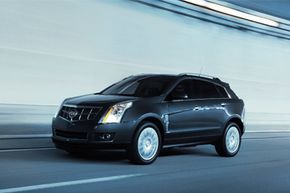Unless you live inside the Arctic Circle, you probably think an air conditioner is a necessary accessory for your car, especially on those torrid August days when you find yourself trapped in slow-moving traffic and even rolling down the windows to let the breeze in doesn't provide relief from the heat. But automobile air conditioning has some serious drawbacks. Air conditioners use energy, and unless you're driving an electric car, that energy ultimately comes from your car's engine. Refrigerating the interior of your car costs you additional gasoline and generates carbon emissions that lead to smog and climate change. A 2005 government study estimated that air conditioner use decreased a car's fuel efficiency by 21 to 24 percent and could increase automotive carbon emissions by as much as 120 percent over normal levels [source: Lustbader]. So every time you turn on your car's air conditioner, you're costing yourself more money and releasing damaging pollutants into the environment. Yes, there are times when air conditioning is absolutely essential, but shouldn't there be a better way to keep the interior of your car cool?
One alternative now offered by several auto manufacturers is air-conditioned seats. By confining the cooled air directly to the spot where the hot driver (or passenger) is sitting, air-conditioned seats use energy more efficiently than air conditioners that cool the entire interior of the car. They don't completely eliminate fuel use and pollution, but they minimize it. And air-conditioned seats offer some important advantages over ordinary air conditioners. In cars where the seat air conditioning can be remotely activated, they eliminate the searing burn sitting on superheated, sun-warmed upholstery when you first climb in the car. They also allow both driver and passenger to fine tune the air conditioning to their own needs, and can protect your clothes from embarrassing sweat stains. And some people just enjoy having cooled air applied directly to their overheated bodies. It's not quite as nice as jumping into a swimming pool on a hot day, but it comes close.
Advertisement
How do air-conditioned seats work? Do they still use a central car air conditioner or is the air conditioner located in the seat itself? How does the air get out of the seat so that it can cool the person sitting in it? Can you buy air-conditioned seats for cars that don't have them built in? We'll answer those questions and more in the pages that follow.




